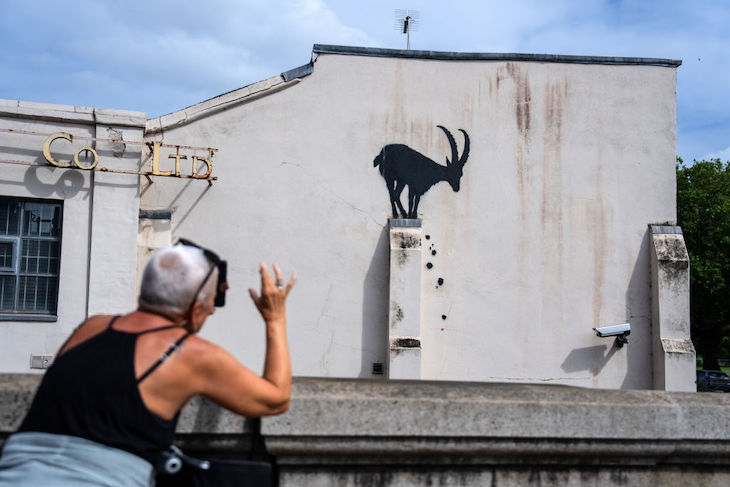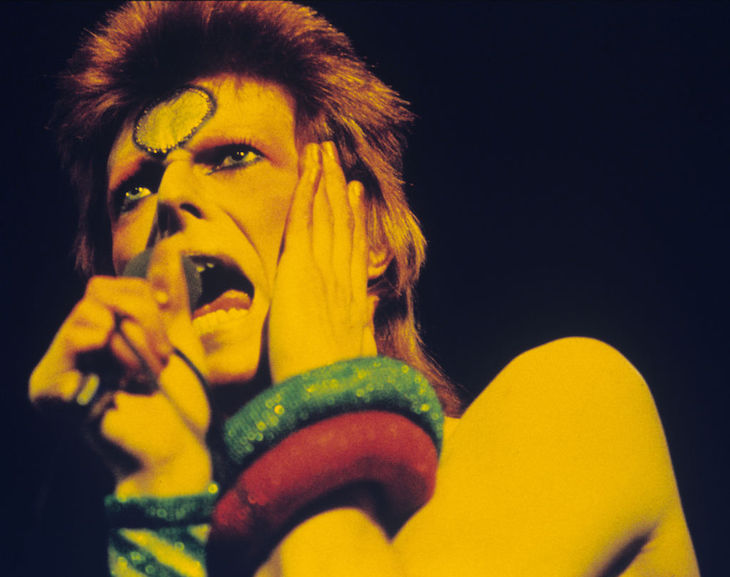Should you be woken in the middle of the night by the sound of a hydraulic lift rising from a van, and look out of the window to see a stern-looking bearded man spray-painting something on your wall, your usual instinct might be to ring the police. These days, however, you’d be better off calling an estate agent, an art dealer or both. Should an original Banksy artwork be found on your property, it’s likely to make your home considerably more valuable; assuming, that is, someone doesn’t make off with it before you’ve had a chance to sell it. In Peckham in south London last Thursday, a Banksy picture of a howling wolf appeared on a satellite dish just long enough for the locals to become aware of it before two enterprising amateur art dealers, their identities disguised with masks, produced a ladder and made off with their prize, which could, if Banksy’s recent auction records are anything to go by, be worth hundreds of thousands, or even more.
The Guardian, a predictably pro-Banksy title, suggested the recent antics had ‘been designed to cheer up the public’
In any case, the recent proliferation of Banksy artworks all over London over the past week is bewildering. There have been monkeys, elephants, a solitary goat, the stolen wolf and a pair of pelicans. On Sunday, Banksy’s anti-establishment – or simply lawless – side was displayed when a glass police box in the centre of the city was festooned with piranhas. This may have been some joke of infinite subtlety reflecting on the nation’s reaction to his latest works, or alternatively some piece of obscure whimsicality. But in any sense, it has given the already overstretched law forces of the capital something else to consider. Two policemen had the job of becoming art detectives, waiting to hear whether the work should be allowed to continue to exist or if they will have to destroy or dismantle it.
The reason for the artist’s sudden rush of creativity remains uncertain. The Guardian, a solidly and predictably pro-Banksy title, suggested that the recent animal antics had ‘been designed to cheer up the public during a period when the news headlines have been bleak, and light has often been harder to spot than shade’ and that ‘Banksy’s hope, it is understood, is that the uplifting works cheer people with a moment of unexpected amusement, as well as to gently underline the human capacity for creative play, rather than for destruction and negativity.’
Well, that’s the world told. But with Banksy’s current spate of artworks showing no signs of coming to an end – the Guardian was briefed that ‘London residents should then keep their eyes peeled, a spokesperson suggested, for a few days longer’ – this could well last into September at this rate. However, for all of those who find it either harmless fun, or even some sort of daring experiment in guerrilla public art, there will be many others who sigh and talk about vandalism and double standards; as Ross Clark wrote a few months ago in this title, ‘While Banksy has the support of the middle classes and, importantly, claims to have a counter-cultural, anti-consumerist message, an advert for a fish and chip shop is just too oikish.’ An advert for a fish and chip shop is probably not going to be worth as much as a one-bedroom flat in central London, either.
It is possible to admire aspects of Banksy’s creativity and spirit without standing to attention every single time the pseudonymous pseud offers an increasingly blasé world his latest spurt of stencilling. He’s no Marcel Duchamp, or even a Tracey Emin or Damien Hirst, whose ostentatious works really did say something about the age in which they were created. Banksy is a showman, someone whose new pieces might raise a smile, but are equally ephemeral and devoid of any real value or point; save, of course, for the possibility of making the fortunate, or the deeply unscrupulous, a lot of money. So if you do hear the gentle whir of a hydraulic lift in the middle of the night, thank your lucky stars for the possibility of a quick buck coming your way. But the chance to be involved in great, transformative art? That’s not on anyone’s agenda this time around.
Catch up on the latest Spectator TV:







Comments